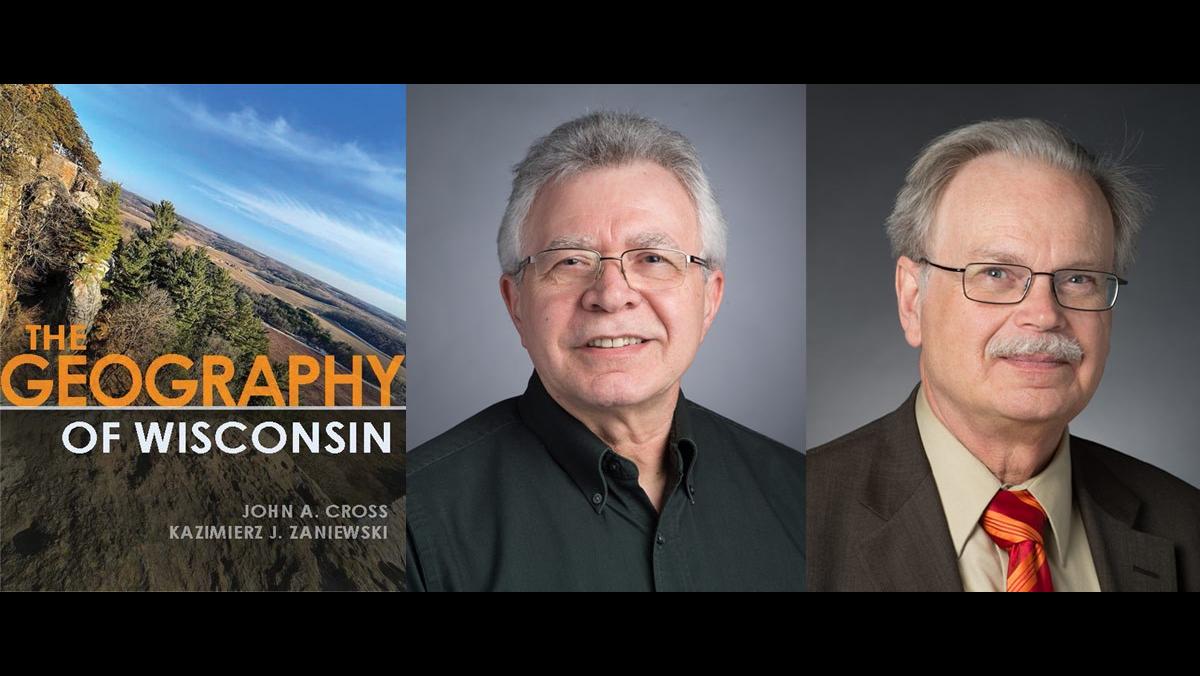More than two billion years of Earth history, and thousands of years of human history, have shaped the physical landscape in Wisconsin and, in turn, influences how we live with the land. In The Geography of Wisconsin, written by John A. Cross and illustrated by Kazimierz J. Zaniewski, readers are taken through the vast physical and cultural landscapes of the state in detail, with a generous complement of photographs and data-rich maps.
Some who are unfamiliar with the region assume that the Midwest is one big, flat cornfield. In their first several chapters, Cross and Zaniewski dispel this notion, giving an overview of Wisconsin’s geology and physical landscape. Geologically speaking, the landscape here is one of the most varied in the country. As the authors point out, “The first views of Wisconsin’s physical landscape that a traveler sees when approaching the state vary tremendously, depending upon one’s location.” Quite right: just contrast the rugged, rocky outcrops near Lake Superior with the undulating glacial landscape in the state’s southeast. These landforms shape patterns of vegetation, soil, and climate across the state, which together set the stage for our human stories.
Cross and Zaniewski then turn their attention to these stories and the historical record of the state’s settlement, from early fur trading and mining to forestry and logging, and then to farming and dairying, asserting that “One cannot understand the contemporary landscape without considering an area’s historical geography, given that so much of what we see is a legacy of the past.” With the historical scene thus set, the authors move on to contemporary human geography. Agriculture, transportation, industry, urbanization, tourism, and demographics all combine to form our experience of the state, and each get a dedicated chapter in The Geography of Wisconsin. Through this treatment, it becomes clear just how much livelihoods in Wisconsin have changed over the last 200 years, shifting from predominantly extractive industries, agriculture, and manufacturing to tourism and the modern information economy.
Interspersed throughout the book are stories of local Indigenous nations both historical and contemporary. We learn about the origins of the state’s numerous effigy mounds, the importance of the Menominee Nation’s forestry, and the restoration of the Badger Ordnance Works involving the Ho-Chunk nation, and more. Nonetheless, The Geography of Wisconsin would have benefitted from more thorough and dedicated attention to Wisconsin’s original inhabitants, who played a critical role in shaping much of the landscape before the arrival of the first Europeans and who have since continued to be a vital force in the region.
While The Geography of Wisconsin might present itself as a textbook (and it certainly succeeds in filling that role), it also serves as a useful reference volume for any bookshelf in Wisconsin. Wisconsin, like everywhere else, is facing a time of change. Climatic, political, and economic patterns are all in flux. Given the uncertainty of our present moment, looking back at the physical and cultural context of the state can help not only reveal the contemporary landscape, but also help determine the direction of the future. The Geography of Wisconsin is an elegant starting point for that endeavor.




